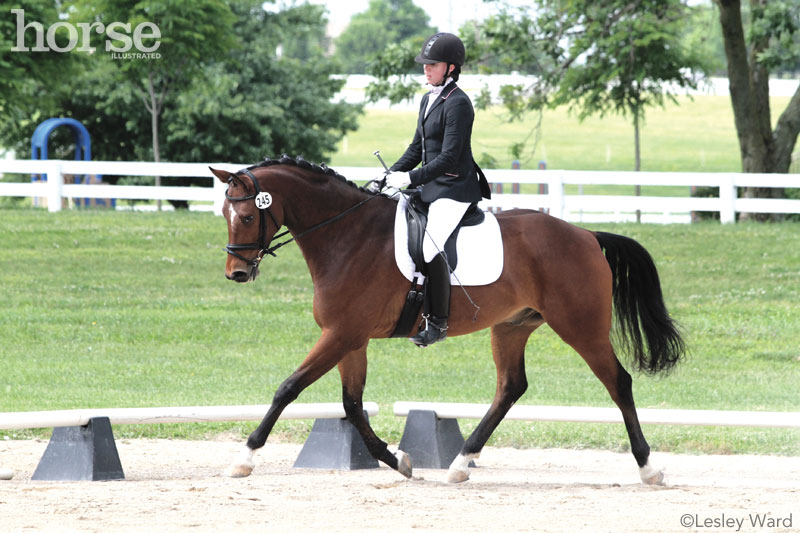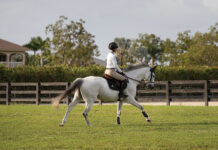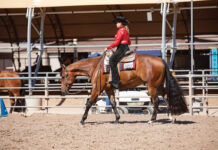
Q: I receive comments on my dressage tests indicating that my horse is too rushed. How do I fix his tempo?
While distinguishing between tempo and rhythm may be confusing, these are often issues that go hand in hand. Imagine a sluggish horse cantering slowly with little impulsion: tempo is characterized by the slowness of the footfalls, which will most likely also impact rhythm, as the lack of energy degrades the canter from a three-beat to a four-beat gait.
“Judges really want to see consistency and steadiness,” says Grand Prix dressage competitor and popular clinician Jeremy Steinberg. He notes that the gait should reflect a metronome-type quality. In fact, some riders make use of a metronome app on a smartphone attached to their belt to gain greater awareness of tempo while riding.
Exercises for Horses That Rush
Horses that tend to rush are often braced over their toplines and into the contact, explains Steinberg. To overcome this tightness, he recommends suppling work in your schooling; your repertoire should include serpentines, changes of direction, circles, and figure 8s. “With lateral changes of the bend, you make it harder for your horse to brace and be stiff through his topline,” he says. Think small increases and decreases over four or five strides, asking the horse to go forward and come back.
Unfortunately, the lower-level dressage tests may be a challenge with horses that charge ahead, notes Steinberg, as the tests are comprised of open lines on long sides and diagonals interspersed with big circles. This is when your homework will help you; work on suppling and transitions at home and in the warm up so that your horse is not inclined to brace and take over.
Exercises for Lazy Horses
If your horse has the opposite problem and is behind the leg, Steinberg addresses these lazy horses with “question and answer” transitions. “I use my leg and see what kind of response I get,” he says. “If I don’t get enough of a response, I correct with a little kick or a touch from the whip to make the horse jump a little forward, and then instantly repeat the transition again. Squeezing and driving a lazy horse is like giving a person a bear hug: the more you squeeze, the more they hold their breath and hold their ribs against you. As you squeeze and drive, the horse tightens down and gets lazier. Transitions are key; constantly being challenged to give you a transition at any moment keeps the horse sharper.
“Trot-canter transitions in particular are a really good challenge to see how quick, crisp, and sharp you can get the horse to respond, hopefully off a smaller and smaller aid.”
This article originally appeared in the July 2015 issue of Horse Illustrated magazine. Click here to subscribe!




